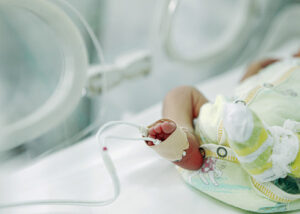Hemolytic disease of the newborn (HDN) is a serious disease associated with significant morbidity and mortality. HDN occurs when maternal antibodies attack fetal red blood cells (RBCs) causing hemolysis; alloimmunization can occur to more than 50 antigens, but the most severe forms of HDN are associated with RhD, Rhc and K antigens. First-line treatments include phototherapy to help break down excess bilirubin and exchange transfusion to physically remove bilirubin. Since exchange transfusion has a mortality rate of up to 5% in newborns, intravenous immunoglobulin (IVIG) is an alternative therapy, which blocks Fc receptors on macrophages, reducing the destruction of the fetal RBCs. To determine if IVIG is an effective therapy for Rh- and ABO-mediated HDN, the International Collaboration for Transfusion Medicine Guidelines performed a systematic literature review and formulated recommendations based on Grading of Recommendations, Assessment, Development and Evaluation (GRADE) methodology. Only two studies were found to have a low risk of bias. Based on moderate GRADE certainty of evidence, IVIG did not decrease the need for exchange transfusion in 172 neonates with RhD- and Rhc-mediated HDN nor ABO-mediated HDN. The committee was unable to provide any recommendations for neonates with severe cases of HDN unresponsive to phototherapy with respect to IVIG because so few studies have been performed, especially with the intensive phototherapy protocols developed within the last decade. Further studies are urgently needed to evaluate IVIG and intensive phototherapy in neonates with severe cases of HDN.
*In a previous version of this article, plasma exchange was used erroneously for exchange transfusion. We apologize for the mistake.*
Reference:

